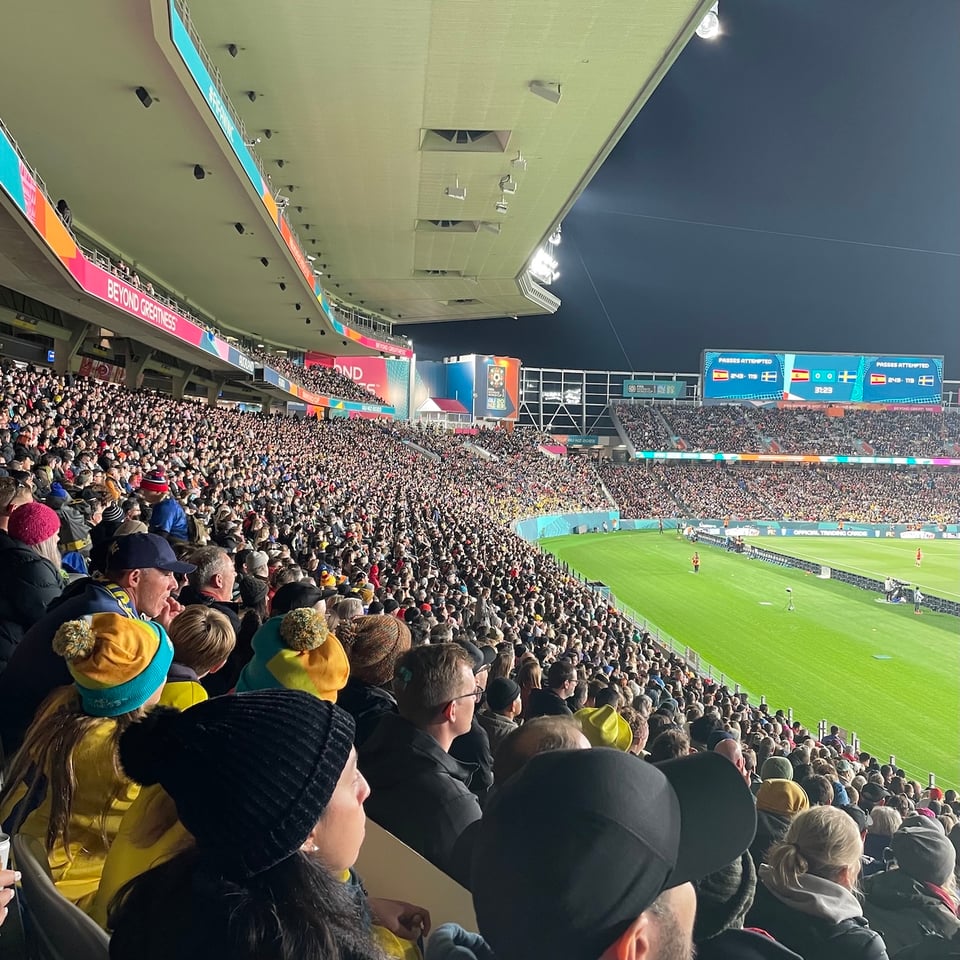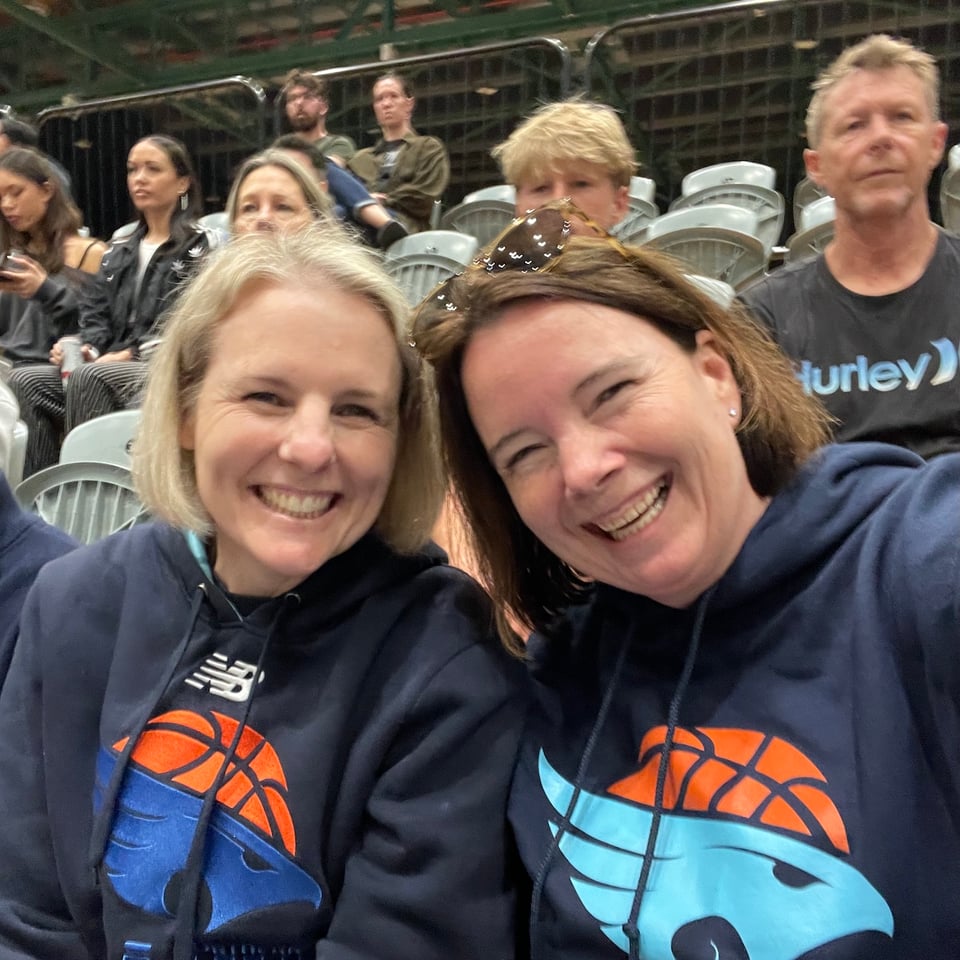OK we’re a day late this week because jet lag knocked me on my ass, but I’m old, so that’s what happens now.
While travelling I’ve been thinking about two loosely-connected stories about sports fans. Last week Sky Sports in the UK launched a new TikTok channel called Halo, described as (I kid you not) the “lil sis” of Sky Sports. Within three days, after a post that plastered “How the matcha + hot girl walk hits” in pink font over Erling Haaland sprinting towards goal, they’d wiped almost everything, posted an apology, and shut the whole thing down. Halo lived fast, died young, and leaves behind a very pink corpse.

Now the episode has become LinkedIn chum, with marketing “experts” trying to outpost each other moralising about what went wrong. You don’t need me to tell you the obvious bits. Womens’ sport is at its most watched right now. The WNBA delivered 54m unique viewers last season. You can see why the Linkedinfluencers love talking about this.

The same thing is true if you stop looking at women’s sport and look instead at women as fans of the so-called “main” (read: men’s) game. In the US, about 42% of NFL viewers are women. The NBA is the same. We’ve already talked about F1, how its fans have gone from “boys’ club” to almost 40% women, and how over the last few years three in four new F1 fans have been female.

And yet, female fans of these men’s competitions are still treated as if we’ve wandered in by mistake: a 2024 survey drawing on Kick It Out’s data found that 52% of women had experienced sexism at a football match, with 85% never reporting it.

Anyway — this is not another Halo post. If Sky really wanted to build something for “new, young, female fans”, they had so many more interesting options, including partnerships led by the women already making brilliant fan content, or just using their main channels to normalise women’s sport, not side-line it (again).

The second story I have been thinking about is this article in the FT that was met with pretty widespread derision: How Romance Readers Found British Ice Hockey. While it sort of tries not to be (?), it’s once again infantilising sports fans. And that brings me to the thing I’ve been thinking about all week: not just how many women are fans, but how they arrive — and what brands and broadcasters and franchises think that gives them permission to do.
I’ve been loud about my journey into ice hockey fandom - a joy-filled covid-era rabbithole that I dove into with my Harry Styles-besties. Of course that journey started on tumblr and in transformative fandom, but of the four of us: two have since learned to play the game, three are years deep in a fantasy league, and all four of us watch regularly. We’re actual fans, for whatever that word means in this context.
There’s a familiar pattern in the stories we tell about women’s fandom in sport: Drive to Survive supposedly creates a wave of “F1 fangirls” who are just there for the hot drivers. Rom-com style hockey novels send romance readers off to their first EIHL games trying to bag a player boyfriend. Women make memes, then apparently accidentally learn the offside rule. And sure — those routes might sometimes be real. But there are two important clarifications that I think keep getting lost.
The first is that how you get here doesn’t disqualify you. If your way into hockey is a romance novel, you’re still a real fan when you’re learning icing and power play stats, buying a season ticket instead of just a single game or explaining line changes to your mates in the stands. If your way into F1 is swooning over Carlos Sainz on Netflix, you’re still a real fan when you’re following quali on a Saturday, or arguing about tyre strategy and safety car calls.
Think about how normal it is for a dude to arrive at a sport sideways. Watching the NFL because his mates invite him into a fantasy league and he doesn’t want to be left out. Or finding F1 through video games first. No one is writing op-eds about how “gaming nerds have rescued motorsport” or treating his origin story as a punchline. We understand that those guys are proper fans now.
But actually none of it is “fake”. It’s precisely what the sports say they want: new audiences and engagement and emotional investment. And if some of those fans arrived via edits, fanfic, or booktok? That’s not a bug.
Here’s the other bit brands keep getting wrong. Just because someone arrived at your sport through romance or narrative or character or community does not mean they want you — the league, the broadcaster, the teams — to march into those other spaces with your shoes on.
Romance readers might discover hockey via Icebreaker, but that doesn’t mean they want official team accounts popping into their Goodreads reviews or running awkward “spicy book club” activations in the comments. We’ve seen how that backfires. F1 fans who love ships and tiktok edits don’t necessarily want Netflix or team comms departments treating their fanfic tags as a brand asset. Football fans who also happen to enjoy “girl math” memes don’t want Sky to build a whole separate pinkified channel that assumes they don’t know what a high press is.
Fannish spaces — booktok, ao3, discord servers, tumblr tags — are where women and underrepresented groups have carved out some autonomy away from official channels. They’re places to be unserious, horny, creative, critical, or deeply nerdy on their own terms.
When rights-holders look at those spaces and think “amazing, an untapped funnel,” they flatten the whole thing back into a marketing persona: “She found us through a romance novel, so she must want flirty copy. She likes tiktok edits, so she must want the sport translated through matcha and ‘hot girl walks’.”
No. She wants:
safe, respectful treatment at games and online
coverage that takes women’s sport seriously
punditry and journalism that doesn’t assume she’s the plus-one
and to keep at least some of her fandom spaces free from the dead hand of branded content.

the video from my talk in Berlin is now live (thank you Marc!). I loved having the time to go deep and expand this from the earlier version I gave in Sydney this year, so I’m calling it the Director’s Cut.
as someone who is idly always half plotting a television series, I loved this article from Kathryn VanArendonk (microfamous for defining what is and is not a bottle episode) which focuses on the last two series I finished (and did not love) All Her Fault and The Beast in Me, both of which fall victim to the “penultimate flashback episode”.
last year I was lucky enough to go and see Brooke Fraser play with the Auckland Philharmonic. It was such an amazing night, and featured appearances from TEEKS, Georgia Lines, and NyOh. She has now released the full concert film and it’s so great — perfect weekend watch:

Forward this email to someone who hates sports.